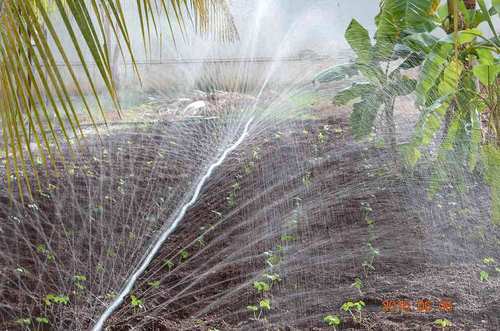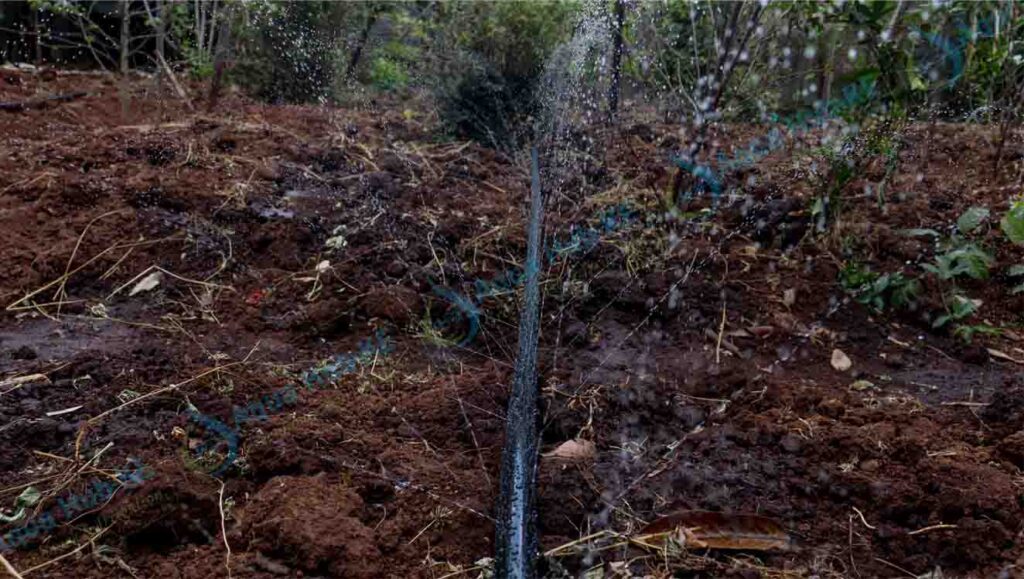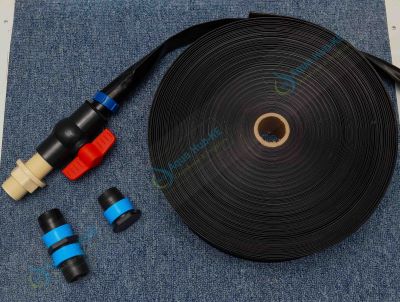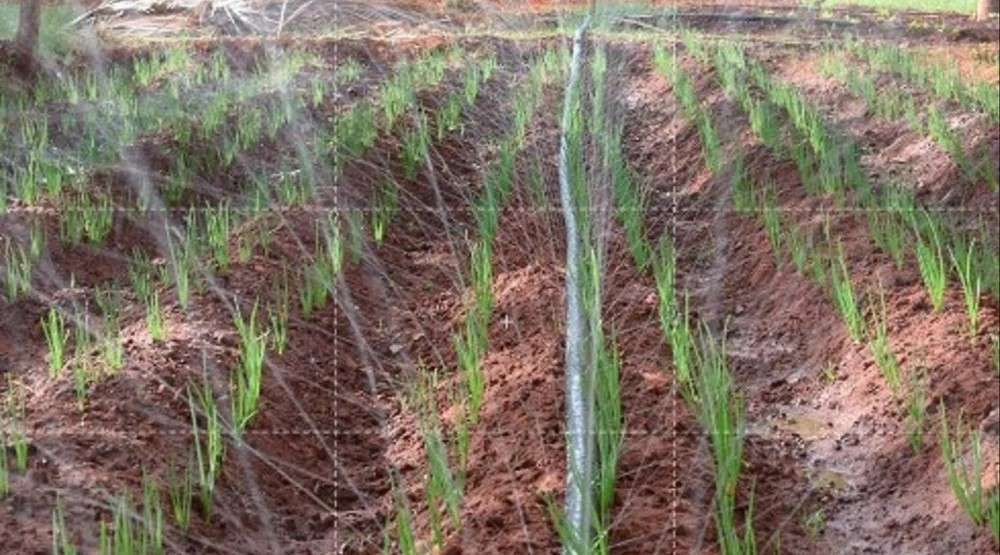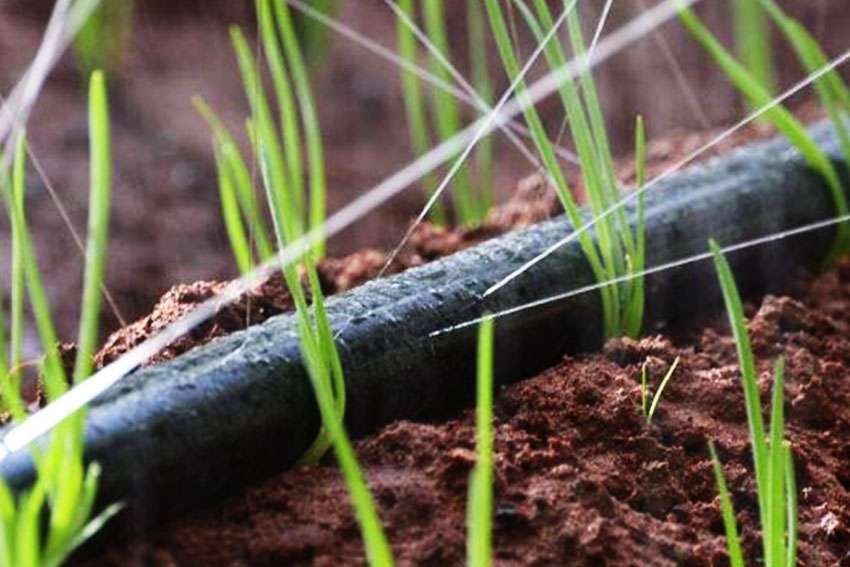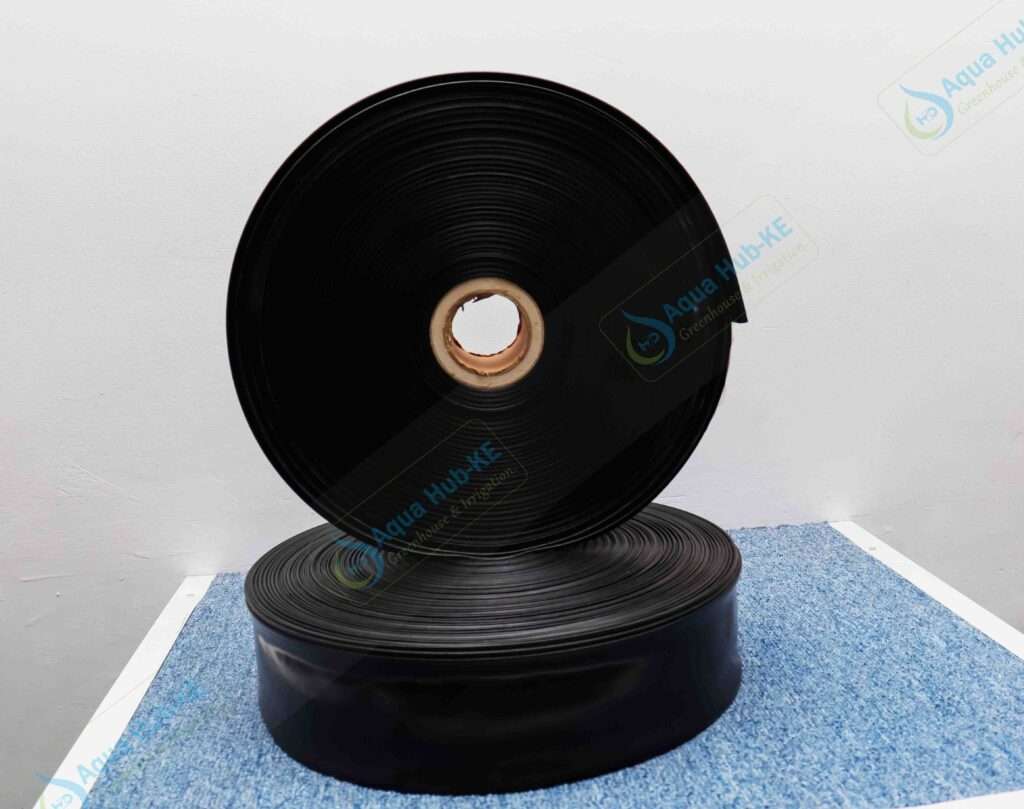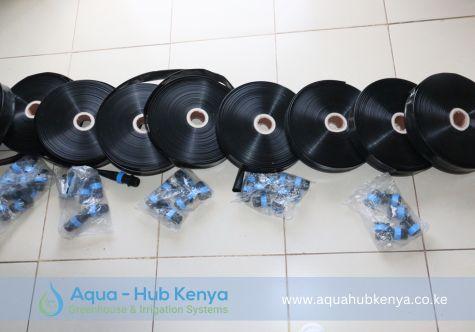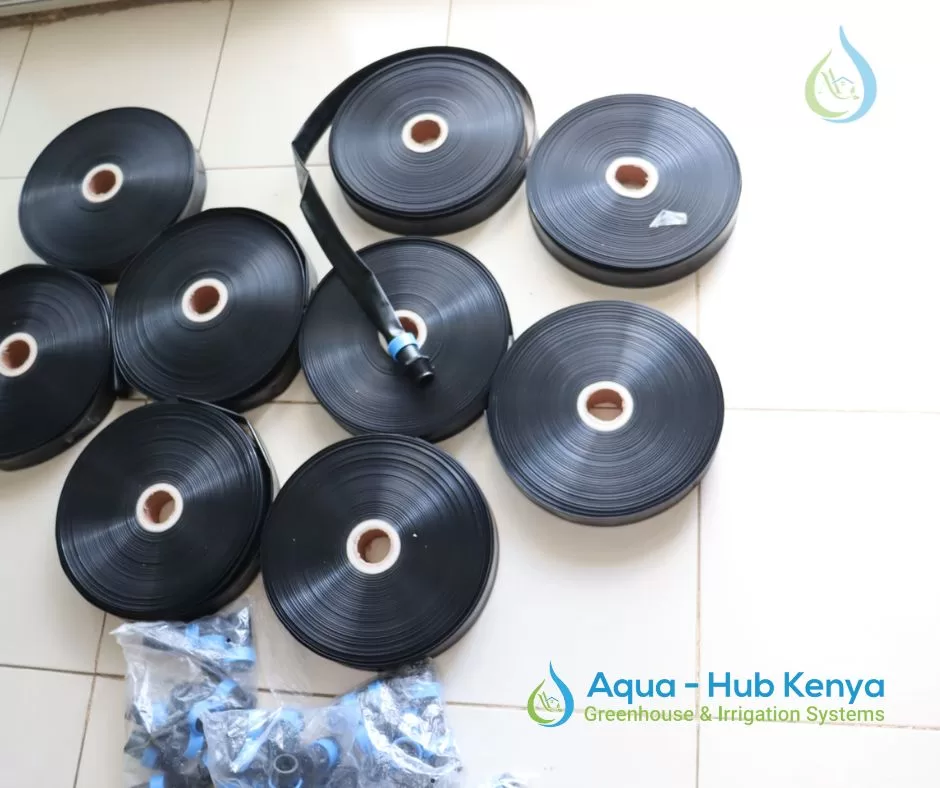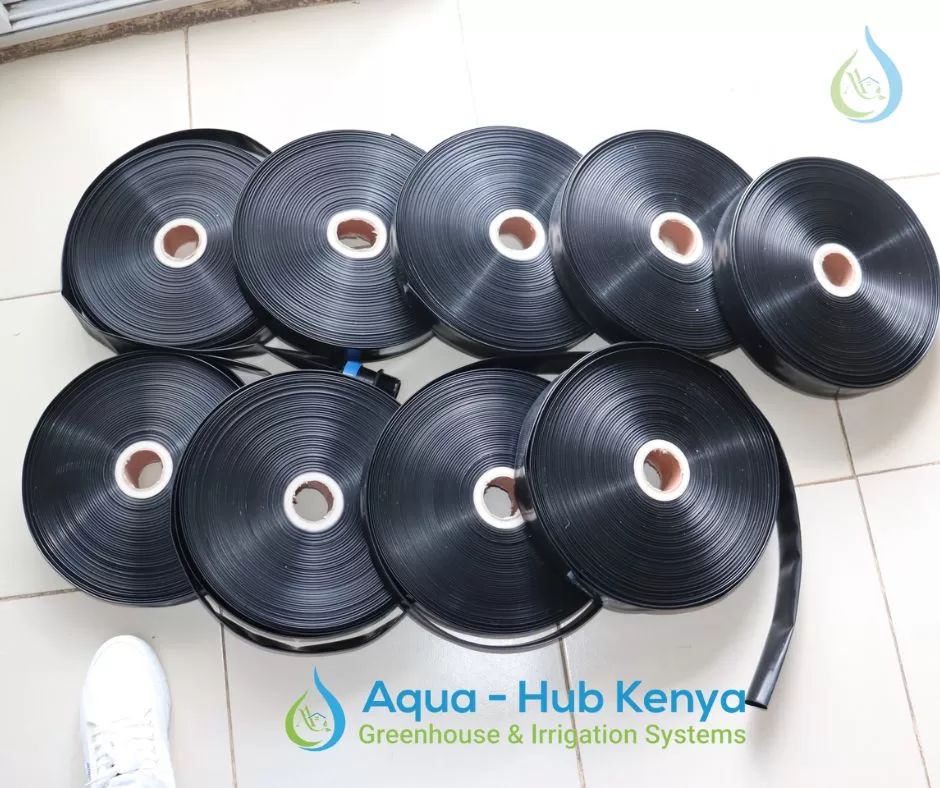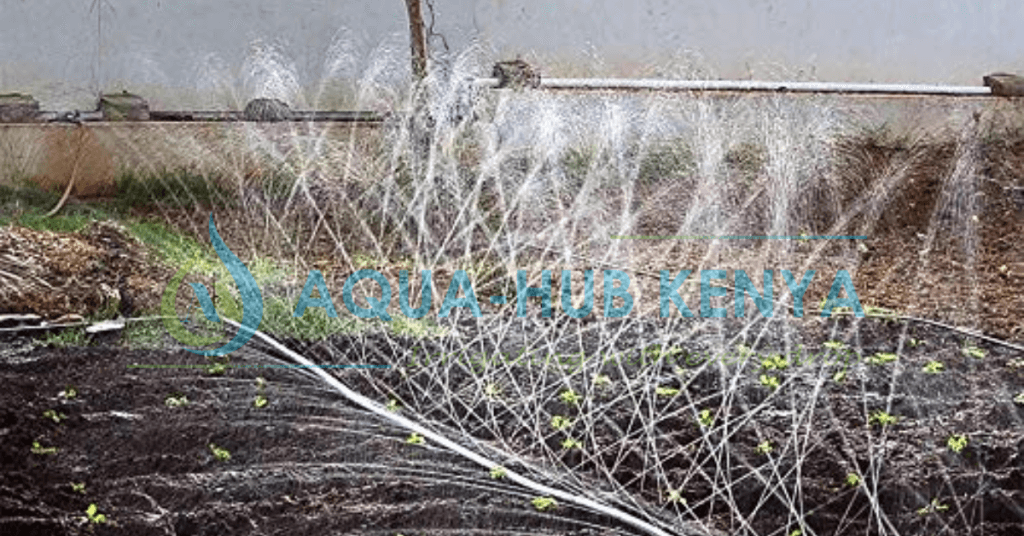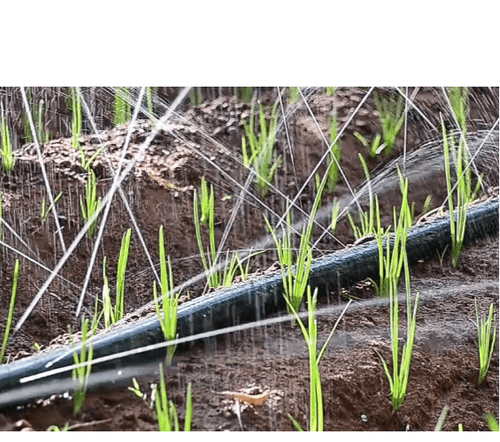Blog
Rain Hose Pipe Price in Kenya 2025
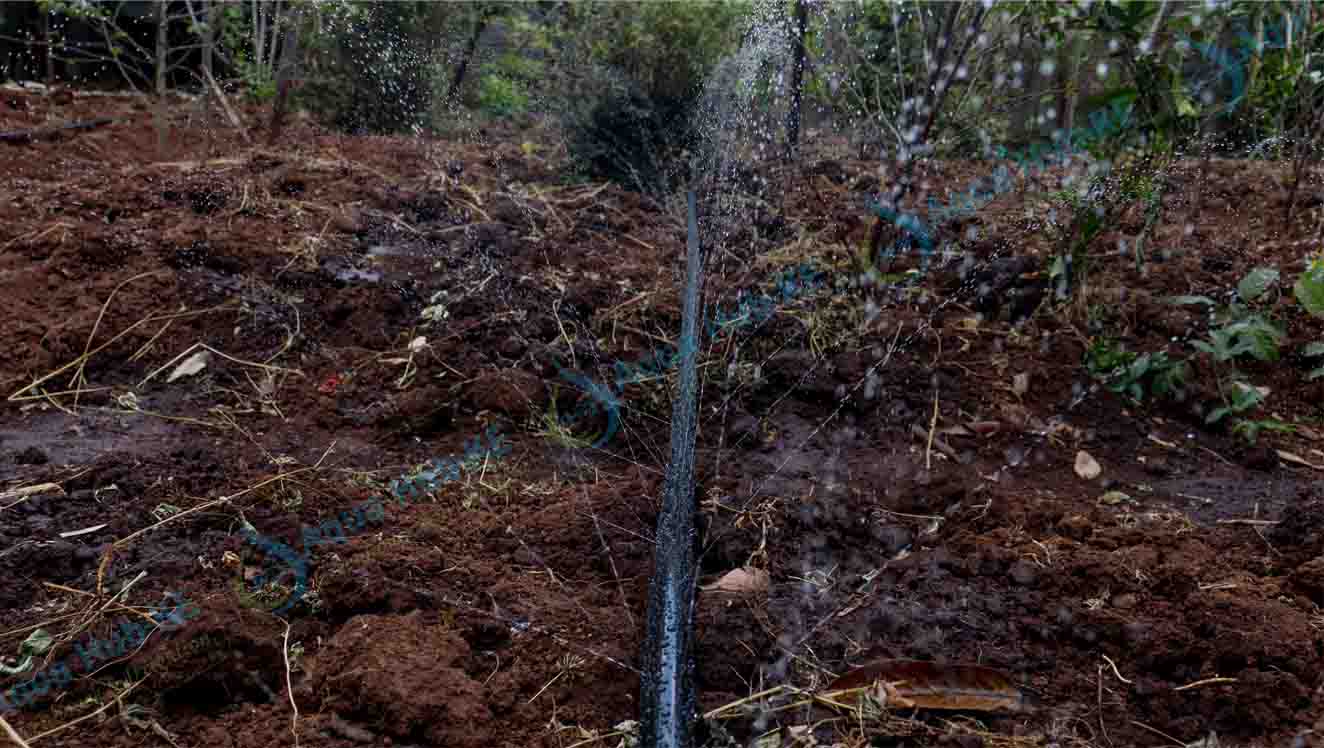
Aqua Hub’s Rain Hose Pipe Price in Kenya is anywhere between KES 3,500 to KES 7,000 with price determined by pipe diameter.
We are known for excellence in supply and installation of Irrigation systems in Kenya and East African Region.
Call 0790719020
Rain Hose Pipe Specification and Price in Kenya – Updated
|
Diameter (mm) |
Flow rate(l/h) | Spray Radius |
Price |
|
32mm |
13 | 3 m |
KES 2,500 |
|
40mm |
16 | 4 m |
KES 3,500 |
|
50mm |
22 | 4.5 m |
KES 4,500 |
Rain Hose Pipe Price in Kenya Per Acre
Our Rain Hose price per acre in Kenya varies depending on the rain hose pipe diameter used in the rain hose system. The average rain hose pipe price per acre is shown below;
|
Diameter (mm) |
Cost per Roll (KES) |
Price per Acre (KES) |
|
32 mm |
3,500 | 56,000 |
|
40 mm |
4,500 |
54,000 |
| 50 mm | 5,500 |
44,000 |
Buy Quality Rain Hose Pipes from Aqua Hub
We supply quality rain hose pipes and fittings manufactured using strong UV treated Polyethylene material. Our Rain hose systems are durable for more than 5 years they are made from new Polyethylene compounds.
UV treated Polythene is resistant to harsh weather conditions like cold, intense sunlight and humidity. For that reason, our rain hose systems are used outside or field irrigation. The PE material makes them strong and resistant to mechanical damage.
Why Choose Aqua Hub
- Discounted prices: our rain hose irrigation systems are subject to discounts for purchase in large quantities.
- Quality: our products are sourced from top brands in the world matching high quality.
- Top customer service: we value our customers and have an excellent team to serve you.
- Durable systems : our rain pipes have proven resilient over time. We guarantee long term performance.
We offer guidance, consultation, irrigation solutions, installation and training to farmers who want to start rain hose or irrigation farming in general.
Call 0790719020 to engage with us.
Our Rain Hose Pipe Price in Kenya Guarantees;
- Low cost: rain hose pipe price in Kenya is low compared to drip irrigation system costs.
- High flow rates: rain hose tapes generate sufficient flow rates volumes for adequate crop use.
- Low pressure requirement: do not need high pressure expensive pumps but low-pressure solar pumps are okay.
- Balanced irrigation: it balances the irrigation rate applied to every crop.
- Flexible flow rates: you can choose between 32mm, 40 mm and 50 mm pipe diameter to get the desired flow rates.
What to Irrigate with Rain Hose Pipes
- Vegetable Varieties such as cabbages, Sukuma wiki, spinach, managu, lettuce and other leafy greens.
- Onion varieties; chives, spring onions, bulb onions, and leek
- Garlic
- Carrots, beetroots, arrowroots and sweet potatoes.
- Artificial animal grasses; lucerne, Napier grass, Rhodes grass, Kikuyu grass and brachiaria.
- Rice, wheat, barley, millet and sorghum fields.
- Lawn grasses.
Considerations for Crops to Irrigate with Rain Hose
When deciding whether to use rain hose for irrigation, consider the crop susceptibility to fungal infections. Rain hose irrigation subjects’ crop to leaf wetting and may cause fungal infections in tomato, potatoes, peppers, French beans and Capsicum.
Rain hose pipes are also not ideal for crops that take wide spacing. It will waste a lot of water on the bare surfaces between the lines.
Need Rain Hose Pipes? Get Complete Rain Hose System
- Mainline HDPE Pipe: supplies water from the source to the rain hose pipes.
- Water source: stores water for irrigation
- Water Pump: 30 m head pump for pressurized irrigation through rain hose pipes.
- End Caps for sealing rain pipe end section and prevent water loss.
- Pipe connectors: connect one pipe to another
- Take-off connector: for connecting the rain pipe to the mainline pipe.
Rain Hose pipe layout
The rain hose irrigation system is often installed above the ground and may take a layout with fixed or movable rain hose pipes.
Rain hose pipes are laid on a length of 25 – 50 m depending on the diameter of the rain hose pipe. The system uses mainline HDPE or PVC pipe and connects to rain hose delivery pipes through offtake connectors. Rain hose delivery pipes are of different flow rates and vary in diameter and wall thickness. Depending on the plant water needs, you can decide to install a rain hose system with a 32 mm, 40mm or 50mm diameter rain hose pipe.
How Rain Hose System Works
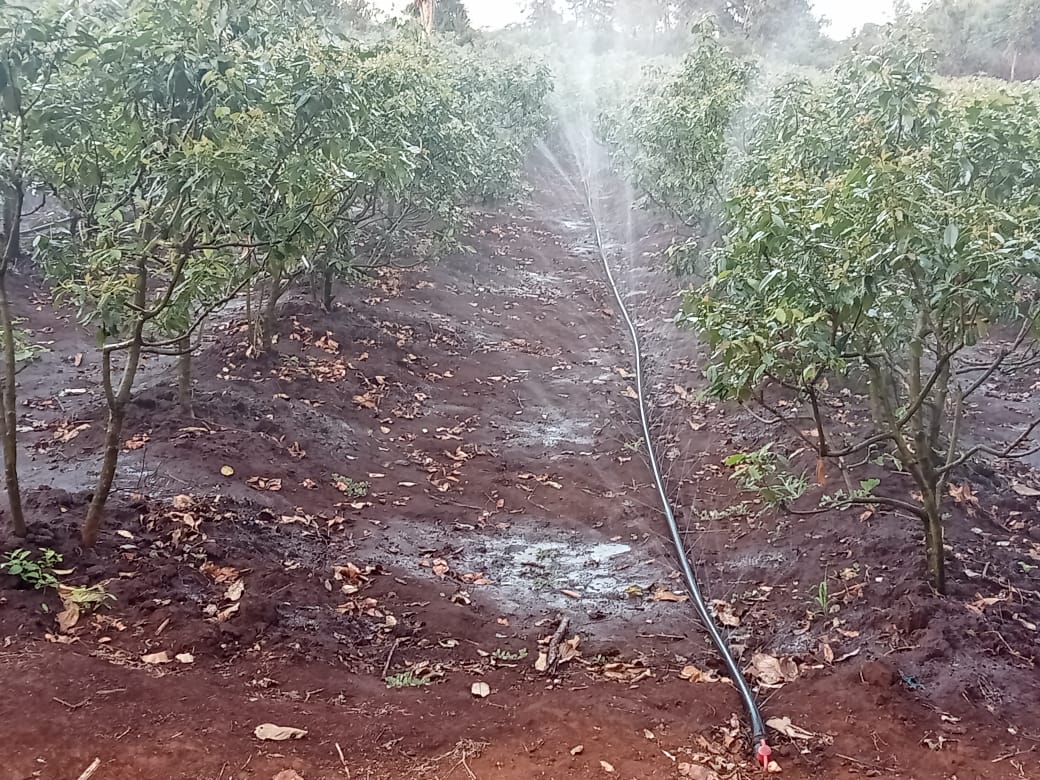
Where sprinkler irrigation is costly, rain hose irrigation systems are best alternatives with reliable performance and less costs. Unlike sprinklers, rain hose irrigation uses lower water volume to provide adequate flow rates to high water needing crops.
Rain hose irrigation does not affect the stem, leaves, or flowers of the plant. It generates light sprays of water which wet the ground steadily causing no destruction to the plant or roots.
Requirements for Rain Hose Irrigation System to Work
The pressure head of the pump should be 30 m and above. Pressure needs are low for small diameter hose pipe but are higher for big diameter rain pipe.
Rain pipes produce a flow radius of 3 m for 32 mm pipe, 4 m for 40 mm pipe and 5 m for 50 mm pipe. The height of the water jets produced by the rain hose pipes is 1 m.
Is Rain Hose Pipe Price in Kenya inclusive of Installation?
The cost of Rain Hose Pipe is often not inclusive of the charges for fittings and installation work. For installation, the cost depends on the size of the farm and the company that has been given the work. At Aqua Hub, we conduct installation at cost starting from KES 15,000.
Rain Hose Pipe Installation
- Lay the HDPE Mainline Pipe: Should be larger than the rain hose pipe.
- Connect offtake to HDPE mainline
- Connect the offtake to the Rain Hose Pipe
- Attach rain hose tapes together using rain hose connector
- Attach End Caps
Rain Hose Pipe Spacing
Spacing for Rain Hose pipes should be at least 1.5 M. Rain hose spacing may exceed 1.5 m depending on the spray radius and pressure of the system.
Advantages of Rain Hose Pipes in Kenya
- Less costly than other irrigation systems
- Ease of installation and maintenance
- Crop Versatility
- Uniform irrigation
- Works under high and low pressure
- High flow rate
- Faster irrigation
- Lower erosion
- Less cost of operation compared to sprinklers

